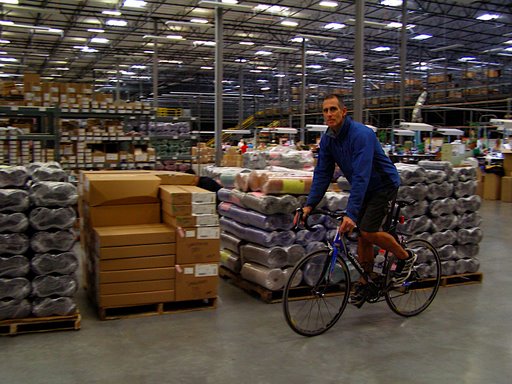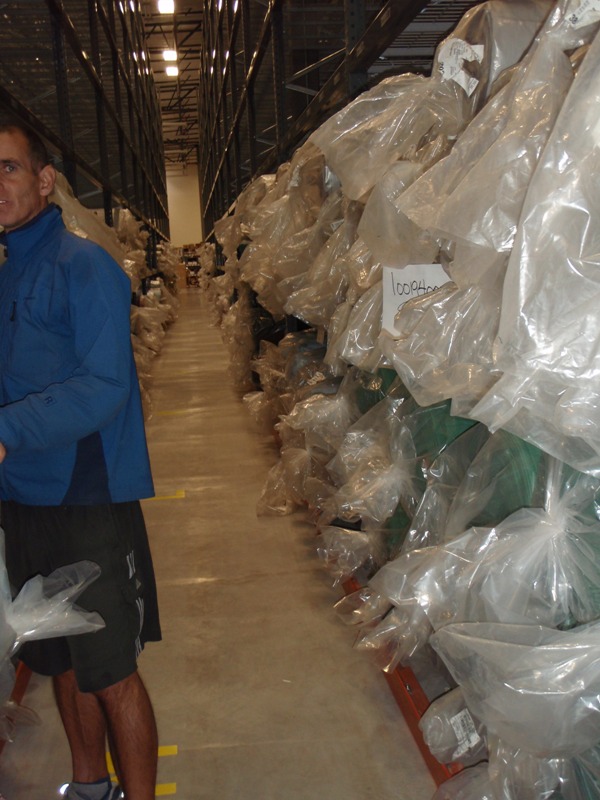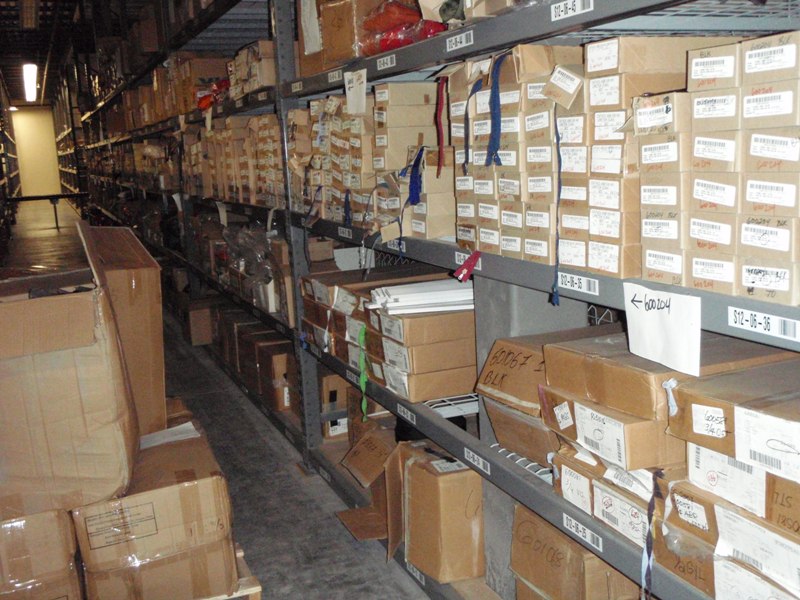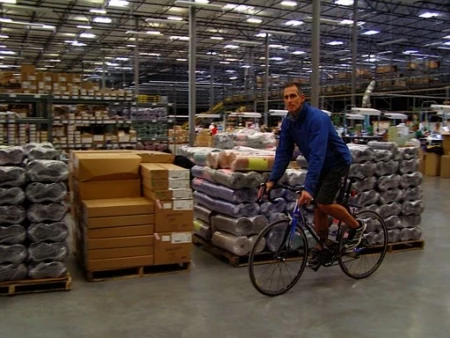My Footprint Series: Setting an Example with Trims and Samples
Series intro: Today's citizen is engaged, concerned, and most of all, confident; confident in his or her choice as a consumer, confident in his or her power as an employee, confident that change is possible.
 Two. Hundred. Thousand. Miles. If you’re an astronaut,that translates to a one-way ticket to the moon or about 8 trips around theEarth at the equator. Barring shuttle pilots, mileage like that demandsrespect. Car owners boast when their odometers coast into 6-digit territory. With the average American annually clocking just over 12,000 milesbehind the wheel, 200K means 16+ years of driving. As someone who’s racked up 200,000miles on his daily bike commute, Chris Carroll knows what each of those milesfeel like. It makes him just the person you want to talk to when the subjectturns to how small things, steadily accumulated, can add up to impressiveresults.
Two. Hundred. Thousand. Miles. If you’re an astronaut,that translates to a one-way ticket to the moon or about 8 trips around theEarth at the equator. Barring shuttle pilots, mileage like that demandsrespect. Car owners boast when their odometers coast into 6-digit territory. With the average American annually clocking just over 12,000 milesbehind the wheel, 200K means 16+ years of driving. As someone who’s racked up 200,000miles on his daily bike commute, Chris Carroll knows what each of those milesfeel like. It makes him just the person you want to talk to when the subjectturns to how small things, steadily accumulated, can add up to impressiveresults.
Chris is responsible for managing the warehousing and distribution of the various trims used on Patagonia garments.His Trims Department manages a staggering array of items: buttons, zippers, andsnaps in colors to match virtually every Patagonia garment ever made; strips ofelastic fabric for every arm, leg, waist, and hem of every sweater, jacket, andpiece of Capilene® made over the decades; hook-and-loop closures for sleeves,luggage, messenger bags. And then there’s the easy-to-overlook things, thingslike size tags, clothing care tags, and of course, every version of thePatagonia label one can recall.
[Chris Carroll pedals past pallets holding a very small portion of the total number of "trims" needed for just one season's line of products. Photo: Lloyd Stradley]
Put simply, the items that fall under Chris’s care arethe parts of your Patagonia garment that you’re least likely to notice. Thesesame parts are what elevate Patagonia products from garden-variety garments toworthy representatives of our legendary quality. If you’ve ever struggled witha difficult zipper or purchased an off-brand item that justdidn’t look or feel well-made, you have a sense of the role Chris and his teamplay in making sure we build the best product.
 Over the years, Chris’s crew has turned theirattention-to-detail to the second part of our mission statement “do the leastharm.” At our Reno Distribution Center, his team receives much of the bulkmaterial that is used in the construction of our sales sample products. These“sales samples” are fully functional models of future products—theyre whatclothing and gear stores need to see and touch before deciding what to stockfor the upcoming season. As suggested above, a fleece jacket requires multipleingredients; often, each of these items (zipper pulls, size tags, etc.) comesfrom a different manufacturer. It is important to deliver all of theseingredients in an organized way to the factory building that jacket. Toillustrate: imagine asking someone to bake you a batch of brownies. They agree,and you can now either 1) send each ingredient individually, at differenttimes, and then call with the recipe at some future undetermined time; or 2)send all of the ingredients in one tidy package, complete with bakinginstructions. Chris’s team focuses on the latter strategy, and in so doing,ensures a much higher level of efficiency and accuracy – which translates to lesswaste.
Over the years, Chris’s crew has turned theirattention-to-detail to the second part of our mission statement “do the leastharm.” At our Reno Distribution Center, his team receives much of the bulkmaterial that is used in the construction of our sales sample products. These“sales samples” are fully functional models of future products—theyre whatclothing and gear stores need to see and touch before deciding what to stockfor the upcoming season. As suggested above, a fleece jacket requires multipleingredients; often, each of these items (zipper pulls, size tags, etc.) comesfrom a different manufacturer. It is important to deliver all of theseingredients in an organized way to the factory building that jacket. Toillustrate: imagine asking someone to bake you a batch of brownies. They agree,and you can now either 1) send each ingredient individually, at differenttimes, and then call with the recipe at some future undetermined time; or 2)send all of the ingredients in one tidy package, complete with bakinginstructions. Chris’s team focuses on the latter strategy, and in so doing,ensures a much higher level of efficiency and accuracy – which translates to lesswaste.
After helping dial in the efficiency of oursample-manufacturing strategy, the question remained: how else can westreamline our processes? Being well-versed in efficient transportation, Chrislogically turned to the extensive shipping and distribution of materials thatwas needed to make this whole process work. It didn’t take long to realize asolution. As Chris states, “one of the major improvements [we’ve made is] to nolonger bring sales sample fabric into Reno, especially fleece 3000 miles fromthe East Coast [before] sending it back to Miami or Texas for forwarding toSouth America for sample production. Kudos to Casey Sheehan (Patagonia CEO)and Doug Freeman (Patagonia VP of Production) who ultimately agreed and pulledthe plug on that environmental and economic waste!”
Chris’s rough estimates on the shipping dollars saved sofar: $35,000 for our Spring 2009 samples and $45,000 for our Fall 2009 samples.It has not yet been determined how much of a positive carbon impact has beenrealized by this $80,000 annual reduction in shipping volume.
When asked if he has an idea of how much of a positiveimpact his idea has had, Chris replies, “I didn’t do anything special, it justmade sense. I’m just satisfied that we are doing samples more efficiently.”
[Middle – Chris leans out of the way to allow a better view of the long row of the fleece fabric he's been trying to ship more efficiently. At approx. 5 feet long, 2 feet thick, and over 50lbs, each roll is bulky and expensive to transport. Bottom – boxes and boxes of zippers. A very small sampling of just one of the components needed to build a complete jacket. Photos: localcrew]
